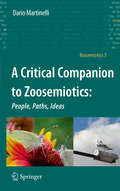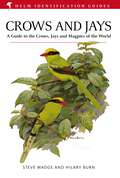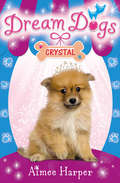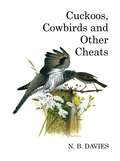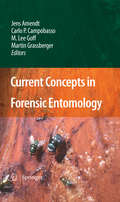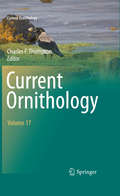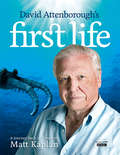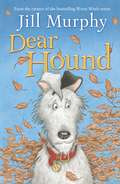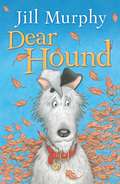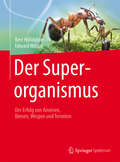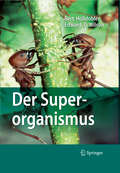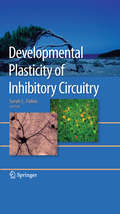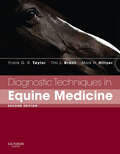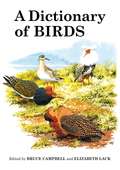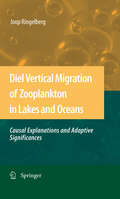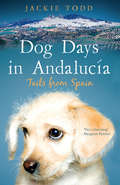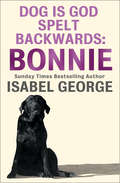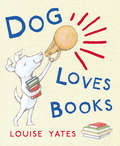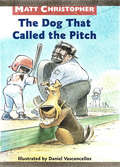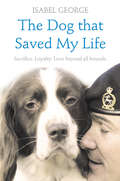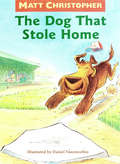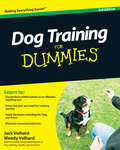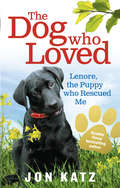- Table View
- List View
A Critical Companion to Zoosemiotics: People, Paths, Ideas (Biosemiotics #5)
by Dario MartinelliA critical companion of zoosemiotics is the first attempt to systematise the study of animal communication and signification through its most important and/or problematic terms and concepts, and its most representative scholars. It is a companion, in that it attempts to cover the entire range of key terms in the field, and it's critical, in that it aims not only to describe, but also to discuss, problematise and, in some cases, resolve, these terms.
Crows and Jays (Helm Identification Guides)
by Steve Madge Hilary Burn120 species of crows, jays and their allies exist in the world today. Many are exceedingly beautiful in colour, grace and form, whereas others are black and somewhat sinister in appearance. In no other group of perching birds has evolution produced such a degree of variation, from the tiny Hume's Ground-Jay of the steppe-highlands of Tibet to the huge Thick-billed Raven of the mountains of Ethiopia. Some have had a long association with people and appear in tales of mythology and superstition, while others have been regarded as agricultural pests. The great majority, however, remain largely unknown, their only contact with humanity being the destruction of their specialised habitats. As a consequence, more than 20 species are now regarded as internationally endangered, some of which are very poorly known.The 30 superb colour plates by Hilary Burn in this book depict them all; each plate is accompanied by an informative caption page summarising the criteria required to identify the species, alongside colour world distribution maps. Some of these birds, bearing such evocative names as the Banggai Crow, Mesopotamian Crow and Flores Crow, have never been illustrated before.The authoritative text by Steve Madge treats each species in depth, summarising identification techniques and concisely reviewing all aspects of corvid behaviour, distribution, population and taxonomy. The author has had first-hand experience of most of the species during his travels throughout the world, travels in which he gradually became fascinated by this very special, but somewhat ignored, group of birds.Crows and Jays is a combination of scientifically accurate information and an identification guide, planned to give anyone, whether a birdwatcher or biologist, a greater understanding of the lives of these beautiful, yet very complex, group of birds. It will surely be a standard work of reference for many years to come.
Crystal (Dream Dogs #4)
by Aimee HarperThe fourth exciting adventure from the animal series set in a glamorous pooch parlour, for animal-crazy girls who love dogs and looking after them.
Cuckoos, Cowbirds and Other Cheats (Poyser Monographs)
by Nick Davies David QuinnIn this fascinating new book, Nick Davies describes the natural histories of these brood parasites and examines many of the exciting questions they raise about the evolution of cheating and the arms race between parasites and their prey. Brood parasites fill their armory with adaptations including exquisite egg mimicry, rapid laying, ejection of host eggs, murder of host young, chick mimicry and manipulative begging behavior: ploys shown by recent research to have evolved in response to host defense behavior or through competition among the parasites themselves. While many host species appear defenseless, accepting parasite eggs quite unlike their own, many are more discriminating against odd-looking eggs and some have evolved the ability to discriminate against odd-looking chicks as well. How is this arms race conducted? Will defenseless hosts develop defenses in time, or are there constraints which limit the evolution and perfection of host defenses? And why are so few species obliged only to lay eggs in host nests? Have host defenses limited the success of brood parasitism, or is it in fact much more common than we suspect, but occurring mainly when birds parasitize the nest of their own kind? All of these puzzles are examined in descriptions of the natural history of each of the groups of parasites in turn. Here is a book with wide appeal, both to amateur naturalists fascinated by this most singular and macabre of behaviors and by ornithologists and ecologists interested in the evolution of ecology and behavior. The story takes us from the classic field work earlier this century by pioneer ornithologists such as Edgar Chance, Stuart Baker, Herbert Friedmann and others, through to the recent experimental field work and molecular techniques of today's leading scientists. We visit brood parasites in Europe, Asia, Japan, Africa, Australasia, and North and South America, to look at some of the worlds most interesting birds and some of biology's most interesting questions, many of which still beg answers from ornithologists in the future. Brilliant illustrations by David Quinn illuminate the species discussed, showing many behaviors never before illustrated and conveying the thrill of watching these astonishing birds in the wild.
Cuckoos, Cowbirds and Other Cheats (Poyser Monographs #60)
by Nick DaviesIn this fascinating new book, Nick Davies describes the natural histories of these brood parasites and examines many of the exciting questions they raise about the evolution of cheating and the arms race between parasites and their prey. Brood parasites fill their armory with adaptations including exquisite egg mimicry, rapid laying, ejection of host eggs, murder of host young, chick mimicry and manipulative begging behavior: ploys shown by recent research to have evolved in response to host defense behavior or through competition among the parasites themselves. While many host species appear defenseless, accepting parasite eggs quite unlike their own, many are more discriminating against odd-looking eggs and some have evolved the ability to discriminate against odd-looking chicks as well. How is this arms race conducted? Will defenseless hosts develop defenses in time, or are there constraints which limit the evolution and perfection of host defenses? And why are so few species obliged only to lay eggs in host nests? Have host defenses limited the success of brood parasitism, or is it in fact much more common than we suspect, but occurring mainly when birds parasitize the nest of their own kind? All of these puzzles are examined in descriptions of the natural history of each of the groups of parasites in turn. Here is a book with wide appeal, both to amateur naturalists fascinated by this most singular and macabre of behaviors and by ornithologists and ecologists interested in the evolution of ecology and behavior. The story takes us from the classic field work earlier this century by pioneer ornithologists such as Edgar Chance, Stuart Baker, Herbert Friedmann and others, through to the recent experimental field work and molecular techniques of today's leading scientists. We visit brood parasites in Europe, Asia, Japan, Africa, Australasia, and North and South America, to look at some of the worlds most interesting birds and some of biology's most interesting questions, many of which still beg answers from ornithologists in the future. Brilliant illustrations by David Quinn illuminate the species discussed, showing many behaviors never before illustrated and conveying the thrill of watching these astonishing birds in the wild.
Current Concepts in Forensic Entomology
by Jens Amendt M. Lee Goff Carlo P. Campobasso Martin GrassbergerForensic Entomology deals with the use of insects and other arthropods in medico legal investigations. We are sure that many people know this or a similar definition, maybe even already read a scientific or popular book dealing with this topic. So, do we really need another book on Forensic Entomology? The answer is 13, 29, 31, 38, and 61. These are not some golden bingo numbers, but an excerpt of the increasing amount of annual publications in the current decade dealing with Forensic Entomology. Comparing them with 89 articles which were published d- ing the 1990s it illustrates the growing interest in this very special intersection of Forensic Science and Entomology and clearly underlines the statement: Yes, we need this book because Forensic Entomology is on the move with so many new things happening every year. One of the most attractive features of Forensic Entomology is that it is multid- ciplinary. There is almost no branch in natural science which cannot find its field of activity here. The chapters included in this book highlight this variety of researches and would like to give the impetus for future work, improving the dev- opment of Forensic Entomology, which is clearly needed by the scientific com- nity. On its way to the courtrooms of the world this discipline needs a sound and serious scientific background to receive the acceptance it deserves.
Current Ornithology Volume 17 (Current Ornithology #17)
by Charles F. ThompsonCurrent Ornithology publishes authoritative, up-to-date, scholarly reviews of topics selected from the full range of current research in avian biology. Topics cover the spectrum from the molecular level of organization to population biology and community ecology. The series seeks especially to review (1) fields in which an abundant recent literature will benefit from synthesis and organization, or (2) newly emerging fields that are gaining recognition as the result of recent discoveries or shifts in perspective, or (3) fields in which students of vertebrates may benefit from comparisons of birds with other classes. All chapters are invited, and authors are chosen for their leadership in the subjects under review.
David Attenborough’s First Life: A Journey Back In Time With Matt Kaplan
by Matt KaplanThe epic story of the beginning of life on Earth from the much loved and respected naturalist, writer and broadcaster, Sir David Attenborough.
Dear Hound
by Jill MurphyAlfie the deerhound is a large grey puppy. He loves his boy Charlie, and cheese and he's very good at digging holes. But poor Alfie has got lost and he's scared - of thunderstorms and being hungry and never seeing Charlie again . . .Meanwhile, Charlie doesn't know what to do - but one thing is for sure: he'll never stop looking for his dear hound. Can Alfie ever find his way back to Charlie - and his great big squashy beanbag in the kitchen?
Dear Hound
by Jill MurphyAlfie's your average deer hound puppy-curious about the world around him, happy to chase the cat and laze around in his favorite beanbag bed, and very loyal to his boy, Charlie. So he's extremely upset when Charlie goes away and leaves him with a sitter-upset enough that he escapes into the woods. With the help of some friendly foxes, Alfie learns to live in the wild, but he never stops thinking of Charlie and trying to find his way home. And Charlie, of course, never stops thinking of Alfie, either. Will these two be able to find each other before it's too late? Featuring irresistible black-and-white line drawings on every spread, Dear Hound is both an accessible, heartwarming story and the perfect choice for readers graduating out of early chapter books.
Der Superorganismus: Der Erfolg von Ameisen, Bienen, Wespen und Termiten
by Bert Hölldobler Edward WilsonKnapp 20 Jahre nach dem Pulitzer Preis für ihr Werk „The Ants" präsentieren Bert Hölldobler und Edward O. Wilson einem breiten Publikum, was die Biologen in den vergangenen zwei Jahrzehnten über die Organisationsformen sozial lebender Insekten herausgefunden haben. „Superorganismen" werden Kolonien sozialer Insekten genannt, die sich durch altruistische Zusammenarbeit sowie komplexe Kommunikation und Arbeitsteilung auszeichnen. Ihr Studium erhellt viele Phänomene und Konzepte von allgemeiner Bedeutung in der Biologie.Das Buch zeigt den Weg der Evolution der „Superorganismen". Auf diesem Wissen aufbauend werfen die Autoren einen Blick auf einen der bedeutendsten Übergänge des Lebens: vom Molekül über die Zelle zum Organismus und darüberhinaus zum Superorganismus, zur Population und schließlich zum Ökosystem.Dieser Softcovernachdruck hält das nachgefragte Buch weiterhin verfügbar.
Der Superorganismus: Der Erfolg von Ameisen, Bienen, Wespen und Termiten
by Bert Hölldobler Edward WilsonKnapp 20 Jahre nach dem Pulitzer Preis für „The Ants" präsentiert das weltberühmte Autorenteam, was Biologen in den vergangenen zwei Jahrzehnten über sozial lebende Insekten herausgefunden haben. Superorganismen sind Insektenkolonien, die sich durch altruistische Zusammenarbeit und komplexe Kommunikation auszeichnen. Die Autoren stellen die Evolution der Superorganismen dar und betrachten aufbauend darauf die bedeutenden Übergänge vom Molekül über die Zelle zum Organismus, zum Superorganismus, zur Population und schließlich zum Ökosystem.
Developmental Plasticity of Inhibitory Circuitry
by Sarah L. PallasNeuroscience has long been focused on understanding neural plasticity in both development and adulthood. Experimental work in this area has focused almost entirely on plasticity at excitatory synapses. A growing body of evidence suggests that plasticity at inhibitory GABAergic and glycinergic synapses is of critical importance during both development and aging. The book brings together the work of researchers investigating inhibitory plasticity at many levels of analysis and in several different preparations. This topic is of wide relevance across a number of different areas of research in neuroscience and neurology. Medical problems such as epilepsy, mental illness, drug abuse, and movement disorders can result from malfunctioning inhibitory circuits. Further, the maturation of inhibitory circuits may trigger the onset of critical periods of neural circuit plasticity, raising the possibility that such plastici periods could be reactivated for medical benefit by manipulating inhibitory circuitry.
Diagnostic Techniques in Equine Medicine E-Book
by Dr Tim J. Brazil, BVSc PhD CertEM Int Med Deceim Mr BVSc PhD Mrcvs, Dr. Tim J. Brazi MrcvsWhether to confirm a diagnosis or to narrow down a list of differentials, a wide range of tests, procedures and methods of investigation is available to veterinarians in equine practice. However, practical information about particular techniques is often difficult to find in standard textbooks of equine medicine and surgery. Diagnostic Techniques in Equine Medicine provides the practical information required to be able to undertake all these procedures. This second edition is organised by techniques per organ system, has been updated thoroughly and includes new material. Clear step-by-step descriptions are illustrated with photographs and line drawings Walks you through conducting a thorough examination with observations on signs and symptoms User-friendly tables illustrate how different techniques can be applied to narrow down a list of differential diagnoses Helpful appendices demonstrate applications of different techniques to assist in defining a diagnosis An increased focus on ultrasound techniques General up-date of current information with new material included Focus on ultrasound image techniques which are used much more in veterinary practices now
A Dictionary of Birds (Poyser Monographs #108)
by Bruce Campbell Elizabeth LackA Dictionary of Birds enlists contributions from over 280 ornithologists and other specialists from around the world. Major, authoritative articles cover the field of modern ornithology and related subjects, many of them running to several thousand words. In addition there are articles on all the bird families, almost all of which are illustrated by a representative species. There are also numerous short entries defining special terms, application of names, etc. The total gives a text of over 800,000 words, supported by more than 500 photographs, drawings and diagrams. The photographs have been selected under the guidance of Eric Hosking to illustrate different activities of birds, and Robert Gillmor has assembled a collection of over 200 drawings of birds, almost all of which were specially drawn for the Dictionary.Compiled for the British Ornithologists' Union, this new work is in line of succession from Newton's A Dictionary of Birds of 1896 and Landsborough Thomson's A New Dictionary of Birds published in 1964 (2nd impression 1965) and now long out of print. This new dictionary, encyclopaedic in treatment, is destined to be a major reference in any ornithologist's library; and its editors and contributors, most of whom gave their time and knowledge freely, have earned the thanks and acclaim of users for many years to come. Frances James, President of the American Ornithologists' Union, writes in her preface of "the role the dictionary will play in fostering communications among nations. For students it will serve as an entrance to the present status of the field. For scientists it will serve as a research tool and a bridge between disciplines."
Diel Vertical Migration of Zooplankton in Lakes and Oceans: causal explanations and adaptive significances
by Joop RingelbergWhatever theory may be advanced to explain diurnal migration, the underlying reactions involved must be demonstrated conc- sively in the laboratory before the explanation can be ?nally accepted George L. Clarke 1933 p. 434 In oceans and lakes, zooplankton often make diel vertical migrations (DVM), descending at dawn and coming up again in late afternoon and evening. The small animals cover distances of 10–40 m in lakes or even a few hundred metres in the open oceans. Although not as spectacular as migrations of birds or the massive movements of large mammals over the African savannas, the numbers involved are very large and the biomass exceed the bulk of the African herds. For example, in the Antarctic oceans swarms of “Krill” may cover kilometres across, with thousands of individuals per cubic metre. These Euphausiids are food for whales, the most bulky animals on earth. Zooplankton are key species in the pelagic food web, intermediary between algae and ?sh, and thus essential for the functioning of the pelagic community. Prey for many, they have evolved diverse strategies of survival and DVM is the most imp- tant one. Most ?sh are visually hunting predators and need a high light intensity to detect the often transparent animals. By moving down, the well-lit surface layers are avoided but they have to come up again at night to feed on algae.
Dog Days in Andalucía: Tails from Spain
by Jackie ToddIt was love at first sight: the huge pale-green eyes, the ruffled tawny hair and the cute way he held his head to one side. What really swung it, though, was his feet being way too big for his body, his ears too big for his head and that, while trying to look brave, he was obviously terrified. Charly was the first of what grew to be a large family of abandoned Spanish dogs taken in by Jackie Todd and her husband Stephen after they emigrated in 1997 to Frigiliana, a picturesque Spanish village in Andalucia. By the time Charly was four, something magical had happened: the people of the village had become close friends and the Todds' memories of their old lives were as weak as British sunshine.Fourteen years on from that first arrival they have ten dogs and eight cats of their own and regularly foster tiny strays that need bottle-feeding until they can be found homes. In 2007, 123 puppies and kittens passed through their door; in 2008, it was 119; and the tragic procession continues today.Millions of people dream of turning their summer holiday into permanent reality. Dog Days in Andalucía is the heart-warming and inspirational story of an ordinary British couple who did just that, making a mighty impression on the village, its people and its surrounding animal population along the way.
DOG Is GOD Spelt Backwards: Bonnie
by Isabel GeorgeAn inspiring and heart-warming short story of canine devotion and bravery.
Dog Loves Books: Read & Listen Edition (Dog Loves #1)
by Louise YatesDog loves books! Dog loves books about dinosaurs and Dog loves books about aliens: in fact Dog loves all books! Dog has his very own bookshop, although he doesn't have many customers. But that's all right, because when Dog is surrounded by books, he is never short of friends or fun. And when someone does come into the shop, Dog knows just which books to recommend...
The Dog That Called the Pitch (Dog That.... Series, The)
by Matt ChristopherMike and his dog Harry, the Airedale with ESP, are shocked to discover that the new umpire for Mike's baseball games can hear their mental conversations.
The Dog that Saved My Life: Incredible True Stories Of Canine Loyalty Beyond All Bounds
by Isabel GeorgeFive incredible true stories of canine bravery in wartime.
The Dog That Stole Home (Matt Christopher Sports Readers Ser.)
by Matt ChristopherWhen his telepathic dog Harry is grounded for nipping another dog, Mike wonders how he'll ever make it through the baseball game without his advice and encouragement. Sequel to "The Dog That Pitched a No-Hitter"
Dog Training For Dummies
by Jack Volhard Wendy VolhardMake training fun and effective This friendly guide shows you how to select the right training method for your dog, based on his unique personality, to reach your desired goals. Whether you want to teach Buddy to sit or master retrieving, you'll get expert training tips and techniques for you and your dog — to ensure a mutually respectful relationship with your four-legged friend. Concentrate on canines — discover why your dog acts the way she does, understand her nutritional needs, and ready yourself for the task of training your dog Prep for your pup — prepare your home for your puppy's arrival, discover the importance of socialization, and get started on housetraining Put your best paw forward — teach basic commands like Sit, Stay, and Down, and get the scoop on how to deal with doggie don'ts like chewing, digging, and excessive barking Take training to the next level — get involved in organized dog activities and competitions, where you'll both show off impressive tricks like retrieving, figure 8s, and much more Open the book and find: Step-by-step instructions for teaching your dog basic commands Helpful advice on crate training Safe ways to address aggression and separation anxiety Tips for teaching Buddy to behave himself around people and other dogs Techniques to keep your senior dog feeling young Health issues that can interfere with training Experts to turn to for training help Learn to: Use positive reinforcement as an effective teaching tool Select the gear you need for training success Teach the basics including Sit, Stay, and Down Eliminate unwanted behavior
Dog Training For Dummies
by Jack Volhard Wendy VolhardMake training fun and effective This friendly guide shows you how to select the right training method for your dog, based on his unique personality, to reach your desired goals. Whether you want to teach Buddy to sit or master retrieving, you'll get expert training tips and techniques for you and your dog — to ensure a mutually respectful relationship with your four-legged friend. Concentrate on canines — discover why your dog acts the way she does, understand her nutritional needs, and ready yourself for the task of training your dog Prep for your pup — prepare your home for your puppy's arrival, discover the importance of socialization, and get started on housetraining Put your best paw forward — teach basic commands like Sit, Stay, and Down, and get the scoop on how to deal with doggie don'ts like chewing, digging, and excessive barking Take training to the next level — get involved in organized dog activities and competitions, where you'll both show off impressive tricks like retrieving, figure 8s, and much more Open the book and find: Step-by-step instructions for teaching your dog basic commands Helpful advice on crate training Safe ways to address aggression and separation anxiety Tips for teaching Buddy to behave himself around people and other dogs Techniques to keep your senior dog feeling young Health issues that can interfere with training Experts to turn to for training help Learn to: Use positive reinforcement as an effective teaching tool Select the gear you need for training success Teach the basics including Sit, Stay, and Down Eliminate unwanted behavior
The Dog who Loved: Lenore, the Puppy who Rescued Me
by Jon KatzAs Izzy settles down to life on Bedlam Farm, Jon is amazed that all signs of the troubled rescue dog who first arrived have disappeared. More than this, the Border collie demonstrates an uncanny sensitivity to, and tenderness towards, humans who are troubled or ill. Izzy's unusual gift leads Jon off the farm and into new, extraordinary friendships, as they together begin volunteer hospice work. Izzy shows Jon what dogs can do for people at our most desperate times. But the work isn't easy, and Jon is reminded that at times he is needy himself. Enter Lenore, a glossy jet-black Labrador retriever puppy, whose seemingly boundless capacity for love reminds Katz why he'd come to the farm in the first place - and why he'd devoted so much of his life to working with dogs. The Dog who Loved is a moving and inspiring story of love, compassion, and the incredibly rich and complex relationships between dogs and humans. Please note, The Dog who Loved is the UK title for the book published in the US as Izzy and Lenore.
